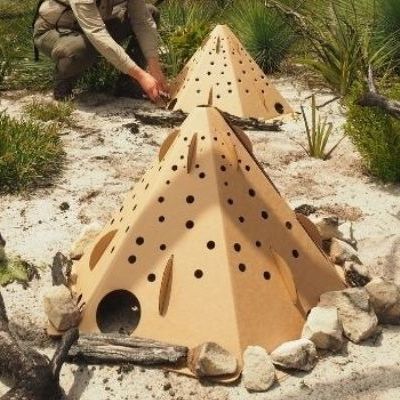The newly-designed ‘habitat pods’ have recently been deployed as part of a world-first research project at AWC’s North Head Sanctuary. The artificial shelters have been designed to address the high mortality of wild animals that occurs in the weeks and months after a bushfire.
Two hundred of the cardboard shelters are being deployed across parts of the sanctuary that were impacted by a recent fire, for an experiment that will run for up to 12 months. It is hoped the unique homes will offer small wildlife species short-term refuge from the elements and a place to hide from predators like feral cats, which have been shown to take advantage of easier hunting conditions post-fire.
The habitat pods themselves take the shape of a sturdy, six-sided pyramid made from folded cardboard, perforated with multiple small holes where animals can scamper in and out. Read more

